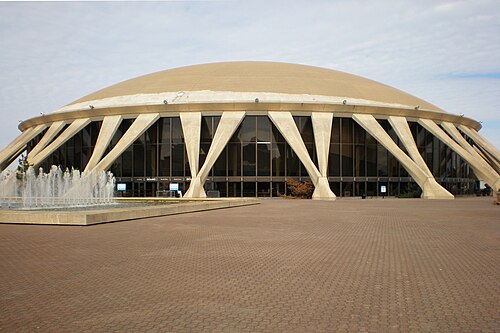
To prevent the walls (and the dome) collapsing under their own weight, they used lighter and lighter aggregate the higher the walls got. At the base they used a limestone called travertine. The aggregate in the top level is volcanic pumice, which weighs about the same a popped popcorn.
At upper left, you can see brickwork arches incorporated into the walls, which they used to transfer the load onto reinforced columns so the concrete beneath the arches could be less robust.
Built in 609 AD, it remains the largest unsupported concrete dome on earth.
